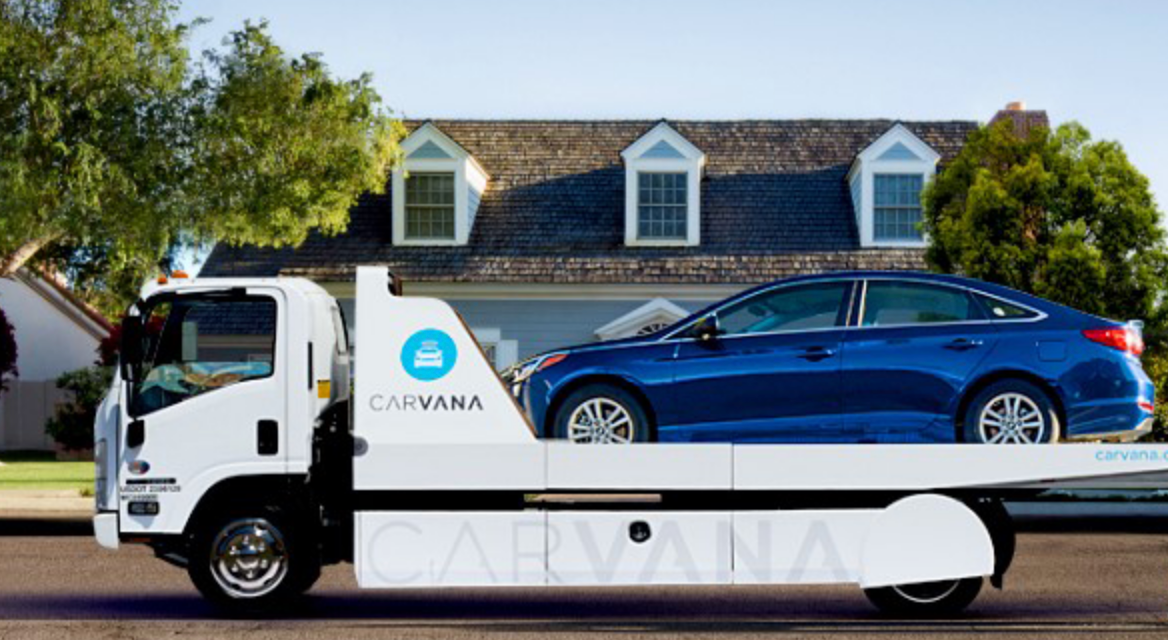How Carvana went from pandemic darling to the verge of bankruptcy

After becoming a pandemic success story, Carvana is at risk of going under. Rumors of bankruptcy and a potential restructuring have been swirling as losses mounted at Carvana, with its stock price starting to fall below $5 a share in early December. Carvana has not yet shared a forecast for 2023, underscoring how drastically things have changed for the once-hot online used car retailer.
After experiencing explosive revenue growth due to the pandemic-induced e-commerce boom, Carvana has been hurt by rising interest rates and debt issuance costs. At the end of the third quarter of 2022, the used car retailer recorded a 43% rise in total liabilities to $9.2 billion. This year, Carvana also expanded its network capacity and locations, which quickly became a costly proposition at a time when the return on investment was low. Last month, the auto dealer reportedly laid off 1,500 employees.
Carvana was founded in 2013 and became known for its towering car vending machines. The online used car retailer went public in 2017 with a $225 million initial public offering. Over the last two years, the company has benefitted from the pandemic which drove used car and truck sales to their highest. In turn, Carvana reached a market cap of $60 billion. At its peak, Carvana sold 200,272 vehicles during the first six months of 2021.
But Carvana reported its first decline in sales in the first quarter of 2022 as rising interest rates, falling used-car prices and inflation-wary consumers formed the ultimate trifecta that hurt the company’s growth prospects. Carvana, in the third quarter of 2022, sold 102,570 vehicles, the fewest since the first three months of last year. To assuage investors, the company said it could borrow roughly $2 billion to buy vehicles and make loans, and potentially raise another $2 billion through real estate.
Last month, the company founder and chief executive Ernie Garcia said the company remains focused on driving the business to profitability. “While progress is rarely linear, we remain on the path to becoming the largest and most profitable auto retailer,” said Garcia after Carvana reported dismal third-quarter earnings.
“This has been a year of pressure for Carvana and the company has responded sensibly to the more negative headwinds,” said Neil Saunders, managing director for retail at consulting firm GlobalData. “It has, for example, been reducing costs and is now saving millions of dollars a quarter. Unfortunately, this has not been sufficient to balance the books,” added Saunders.
One of the most significant issues confronting the company is a financial shortfall. In May, the company bought KAR Global’s ADESA U.S. auction subsidiary for $2.2 billion in cash. “This alignment with ADESA U.S. will further strengthen our foundation for growth and provide us with significant flexibility to execute our plan through a wide range of macroeconomic scenarios,” Garcia said at the time when the deal was officially announced. But it reported a net loss of more than a fifth of that amount in the third-quarter. Creditors are increasingly concerned with Carvana’s numbers and its trajectory.
Ad position: web_incontent_pos1
“They pursued an aggressive growth strategy, both organic — opening 3 new inspection and reconditioning centers — and inorganic, buying KAR’s [Auction Services] 56 auction sites, right as used vehicle end demand tailed off aggressively given rising interest rates,” said Chris Pierce, research analyst at Needham & Company, in an emailed response.
“Its mounting losses do not inspire confidence. As there is a lot of debt outstanding, it is in the interests of lenders to work with Carvana to ensure the company survives. But, at the moment, there is an element of defying gravity in hoping for this,” said Saunders.
Pierce suggested that Carvana could could sell vehicle inventory or pursue a real estate transaction to get cash in the door to extend their runway to prove a path to profitability. “The path forward for Carvana is to sell as many cars as possible, but to do so on a profitable basis, versus prior it was more about selling as many cars as possible. This is what they are working towards,” Pierce added.
Carvana is also struggling with low demand for used cars. “Demand is low right now because dealers, including Carvana, are sitting on aged inventory that they purchased at price points that are making it hard for them to retail those vehicles profitably,” explained Pierce.
While Saunders lauded Carvana’s ADESA acquisition as it will help improve the company’s coverage in the U.S., he was cautioned that it may not be enough to salvage the financial damage the company has endured.
Ad position: web_incontent_pos2
“The year has generally been poor for Carvana with losses mounting and sales declining. Much of this is related to external economic factors, which is pushing down demand for vehicles. Carvana failed to anticipate this which meant it had far too much inventory, especially earlier in the year. This dragged down profit,” said Saunders.
Last month, Garcia told staff that higher financing costs and delayed car purchasing was the reason for the recent job cuts. According to CNBC, Garcia said the company “failed to accurately predict how [economic headwinds] would all play out and the impact it would have on our business.”
Carvana needs to work on “reducing inventory, reducing vehicle delivery costs, driving more volume in profitable segments and looking for further savings,” said Saunders. “These things are not easy to deliver, especially in a more difficult market.”

